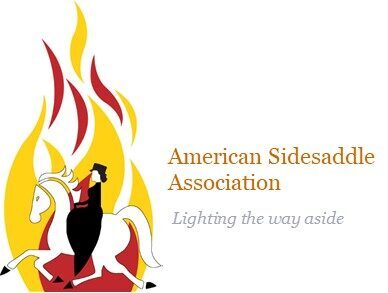The Tack Room at the
American Sidesaddle Association
Ready to take the next step on your Sidesaddle Journey?
Check The Tack Room at the American Sidesaddle Association!
With a wide variety of sidesaddles to choose from, we’ll find one that fits you and your horse.
Getting Started – Find an ASA Instructor
If you’re new to sidesaddle riding, the best option is to find an ASA Instructor near you or attend an ASA Clinic.
You can expect to be correctly fitted for a saddle – it is so important for the sidesaddle to fit the horse and rider to not cause injury to either.
Working with American Sidesaddle Association Accredited Instructors and Clinicians will help to get you a quality saddle, as it’s easy to fall into the trap of cheap, badly made sidesaddles. We will also work within your budget. Anticipate paying around $1,000-4,000. Anything below that amount will likely be of inferior quality with the potential for harmful components such as being unfinished, sharp nails poking through, and possibly causing harm to the horse. Brand new custom saddles will be more expensive and depending on where it is built, an added expense of shipping.
It’s important to understand the variety of sidesaddles. Some on the market are vintage from the 1800s; these may be ridden in but typically need to be adjusted or refurbished by a professional sidesaddle saddlery. You can order custom and new sidesaddles from several working saddleries today.
When having your sidesaddle checked by a professional saddler, be sure to work with someone who is knowledgeable about the construction and build of a sidesaddle. Not everyone is qualified to work on a sidesaddle as they are different than aside saddles. The American Sidesaddle Association can direct you to reputable saddleries to work with.
Depending on what discipline you are interested in participating, you need to make sure the saddle tree is reinforced – this is especially important for jumping sidesaddle.
Understanding Saddle Fit– Measure the Rider | Measure the Horse
It’s important to understand that sidesaddle measurements and astride saddle measurements are not the same, and do not transfer. With sidesaddles, the length of your offside leg from hip to knee is the key factor. Another measurement is the width of the hips.
Note: Americans use a different measuring determination than those in the UK and Europe. A 21″ in America is different than a 21″ in England. When talking with someone selling a saddle, be sure to double check which measuring system is being used. An ASA Saddle Fitter or Instructor will be able to guide you through buying an appropriate fitting sidesaddle.
፠ ፠ ፠
Measuring the Rider for a Sidesaddle:
Sit on a hard-backed chair with a flat seat, have your feet flat on the floor, and back touching the chair back. Measure from the chair back to the back of the bend at the knee. This gives you the combined length of seat and thighbone, which equals the surface space the rider will utilize on the saddle. The measurement from outer hip to outer hip will give the seat width for the saddle.
፠ ፠ ፠
Measuring the Horse for a Sidesaddle:
Correctly fitting the saddle to the horse is more often an in-person experience with the saddle, or a variety of saddles to try. ASA Saddle Fitters and Instructors may be able to judge if a sidesaddle will fit based on pictures, tracings, and prior hands-on interactions. Saddle fit is about feeling how the saddle sits on the horse. Does the sidesaddle fit the horse – behind the shoulder, over the withers, and along the back. Sidesaddles that are too long will infringe on the comfortability of the horse and how the horse is able to move. A hands-on feel will let the saddle fitter know if there is clearance for the horse’s withers and spine, if there is any gaping where the saddle meets the horse’s body, and is the weight distributing evenly.
It is crucial to note that adding more padding like a saddle blanket or half pad will not help saddle fit on a saddle that doesn’t fit the horse – it will feel like wearing thicker socks with shoes that are a size too small – Very Uncomfortable!
What is a Back Tracing and Wither Tracing?
When shopping for a sidesaddle, a common request is a Tracing. A tracing is the outline of specific points on your horse acquired by using something pliable like a wire that will hold a shape, placed on a large piece of paper and traced. This tracing can be cut out to show the topline of the horse and held up to a saddle to see if it will fit the horse’s body. This is a great tool when you’re looking for possible sidesaddles, but they are beyond your region to bring horse and saddle together. The two important tracings you can take, are the Back Tracing or the horse’s topline from withers to loin, and the Wither Tracing which shows the width of the horse where the saddle behind the shoulders. The wither tracing will show how the gullet of the sidesaddle will potentially fit on the horse.
What to Use for a Tracing:
You need a few objects to take a proper tracing of your horse:
- A large piece of plain paper or taped papers that is long enough to display the horse’s entire topline and width over the withers.
- A writing utensil
- A flexible wire that maintains structure
- A Wire Coat Hanger works great
- An Artist Flexicurve Ruler – BUT – it needs to be the 18″ to 24″ variety
- A length of closed wire cable like Romex – readily available from hardware stores. Purchase by the foot and get at least 2 feet.
Remember – your horse’s body changes so it’s important to understand what is causing it (weight gain or loss, muscle building, age related changes) and when to get your saddle fit reevaluated. Don’t fear! You don’t have to get a new sidesaddle every time your horse’s body changes shape – the ASA has skilled members who work with sidesaddles and can help reflock the panels (the padding on the underside of a saddle). Be specific when working with saddle fitters as they may not be knowledgeable with sidesaddles and may not take into account the unique weight distribution of the rider in the sidesaddle.
Understanding Quality – Not All Saddles Are Made Equal
Like all horse tack the quality of the maker, leather and seller can make or break the comfort and safety of the sidesaddle.
With a saddlery that is knowledgeable of working and creating sidesaddles, they will know the intricacies of how a saddle is built from the tree up.
The supplies used is crucial to longevity and comfortability of the saddle, as well as the safety of the sidesaddle.
Quality sidesaddles are not massed produced – they are handmade in each step. Saddles that are made in a factory setting will have telltale signs of poor standards such as inferior flocking in the panels (scrap fabric or carpet bits instead of wool or premium foam), unfinished parts of the saddle (sharp nails poking through), and ill-fitting features. These saddles are often cheaply sold as entry level saddles but cause injuries to the horse or rider. Don’t hurt your horse’s back or your body by going with the cheaper option – take the time to consult an ASA Saddle Fitter, talk to your ASA Instructor, or go to an ASA Clinic. You’ll learn the visual differences between a quality sidesaddle and the inferior products. We can make sure your sidesaddle experience is a great one for both horse and rider.
There are different eras of vintage sidesaddles and understanding their history will help to know the quality of the saddle.
There was a time when you could order a sidesaddle from the Sears and Roebuck Catalog (along with a house, a carriage, and even a kids’ pony!). These saddles need to be evaluated before riding in them to make sure they stand up to the test of time.
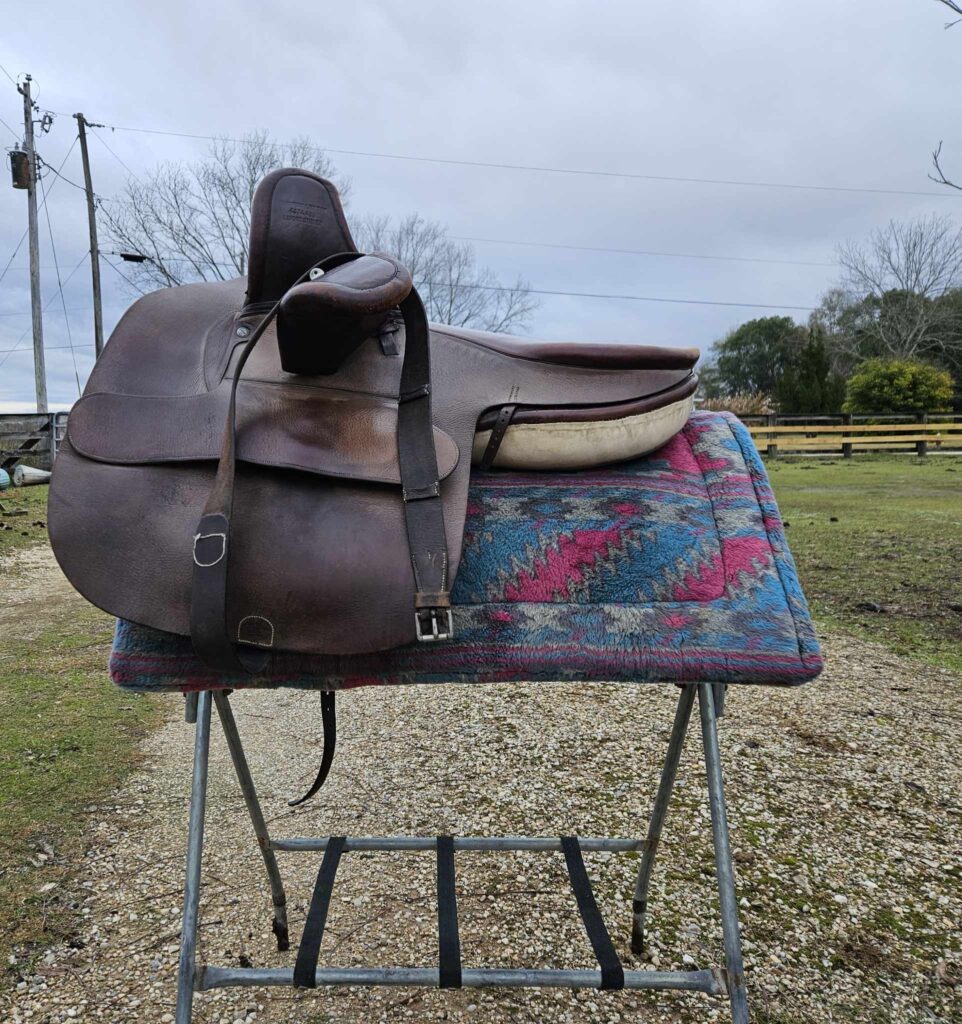
Champion and Wilton English Sidesaddle
High Quality “Old Name” Saddlery
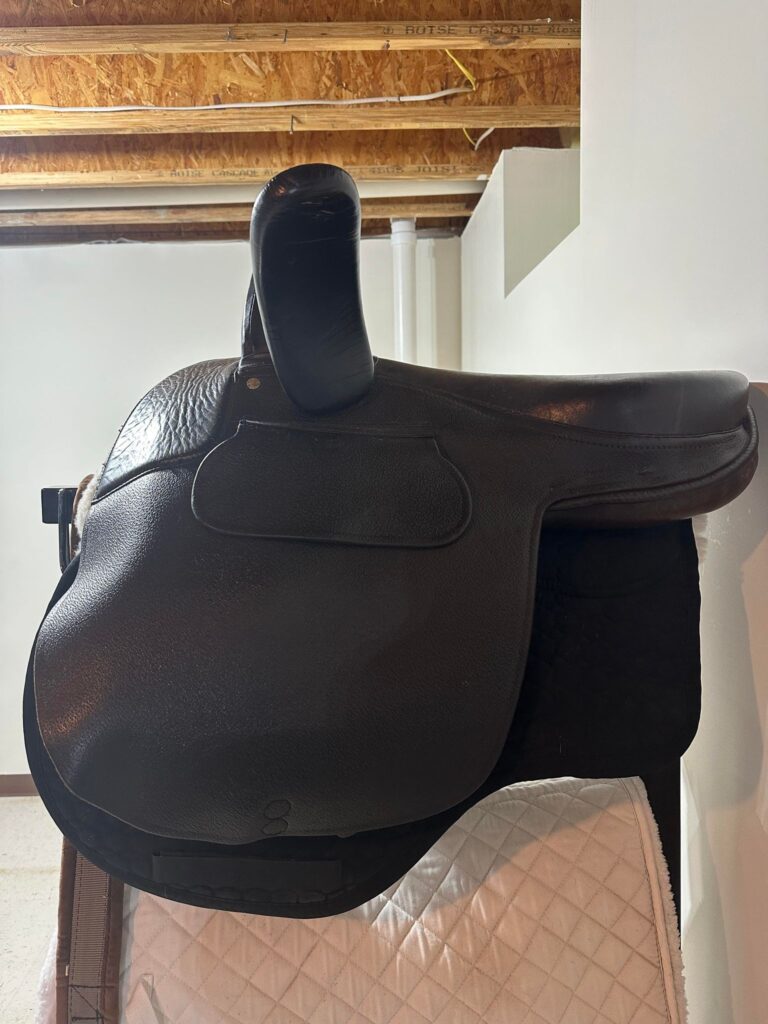
Asian Import
Inferior Quality
Not a Correctly Built Sidesaddle
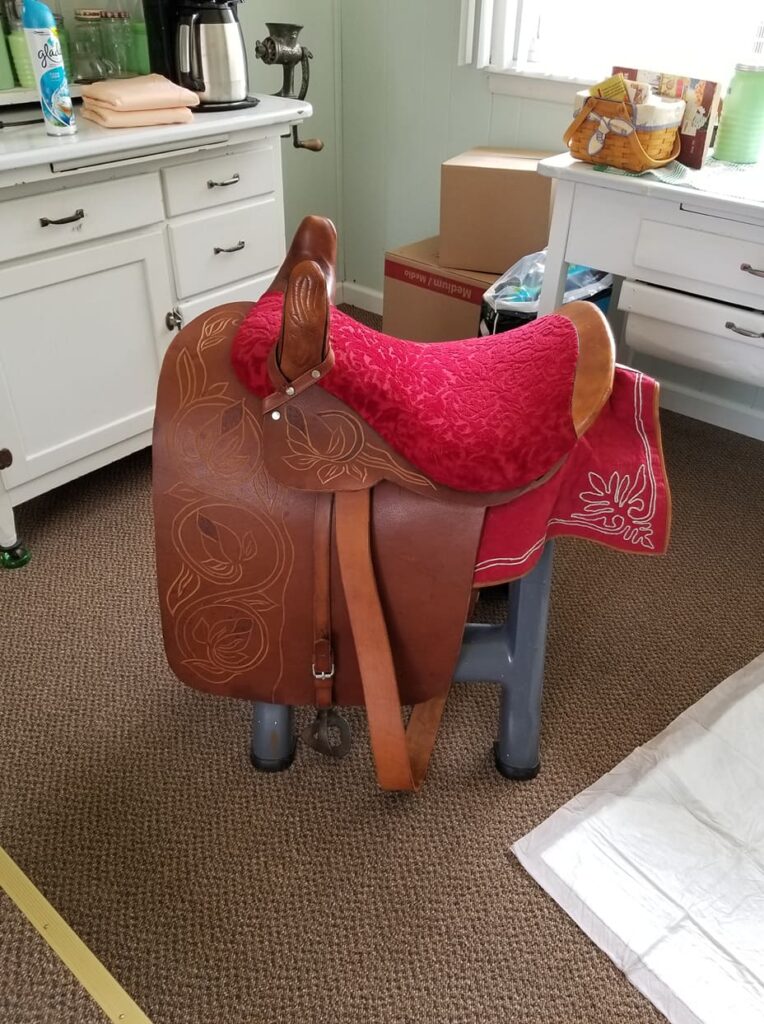
Vintage Sidesaddle
Note how it doesn’t have a Leaping Horn but does have an Offside Pommel
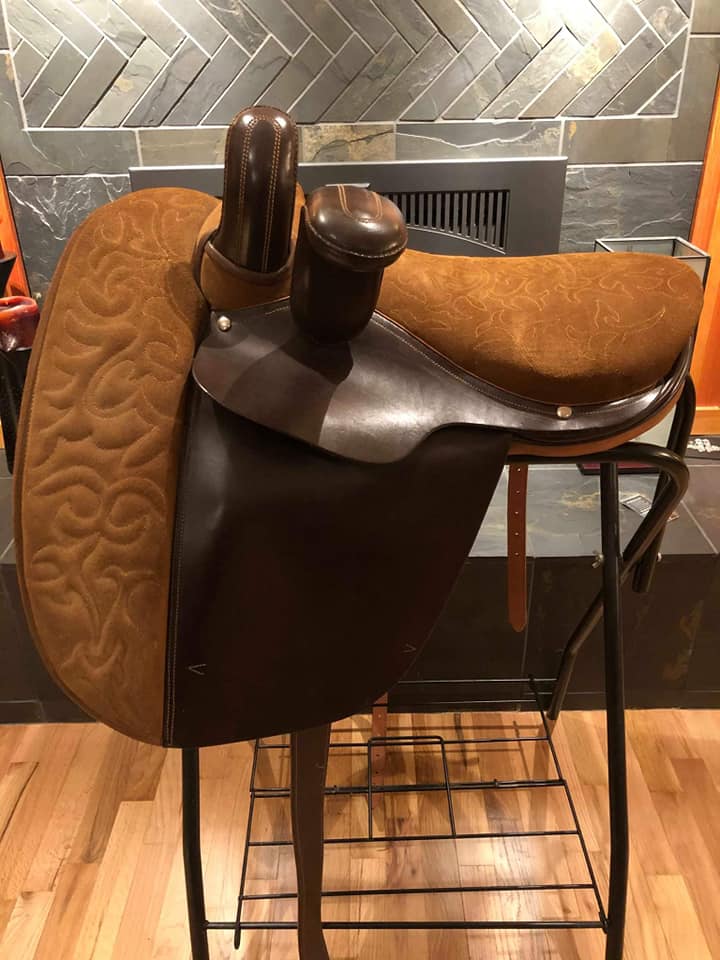
Portuguese English Sidesaddle with Fancy Stitching
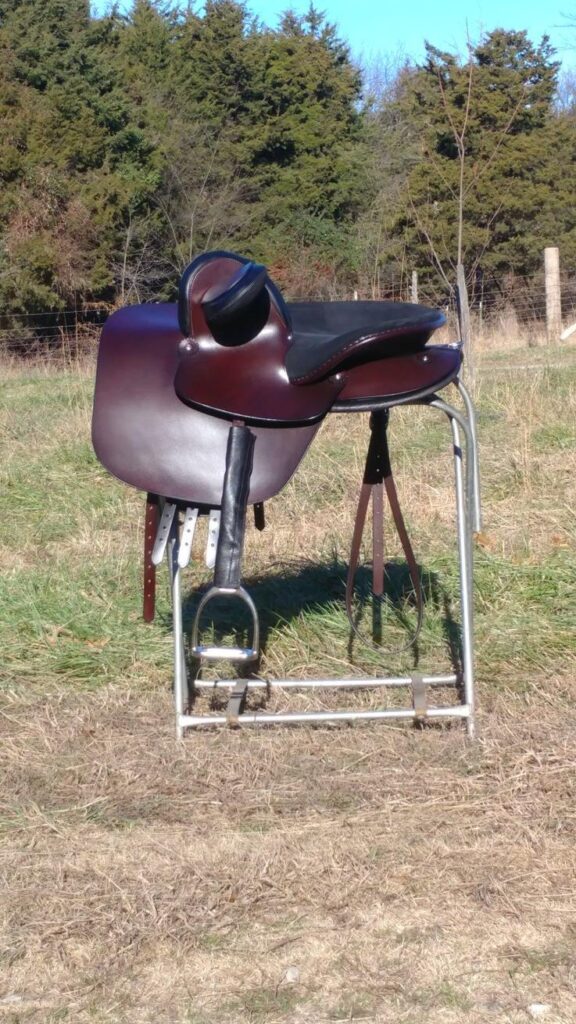
The Crossover Sidesaddle by Crest Ridge Saddlery
Custom New Build
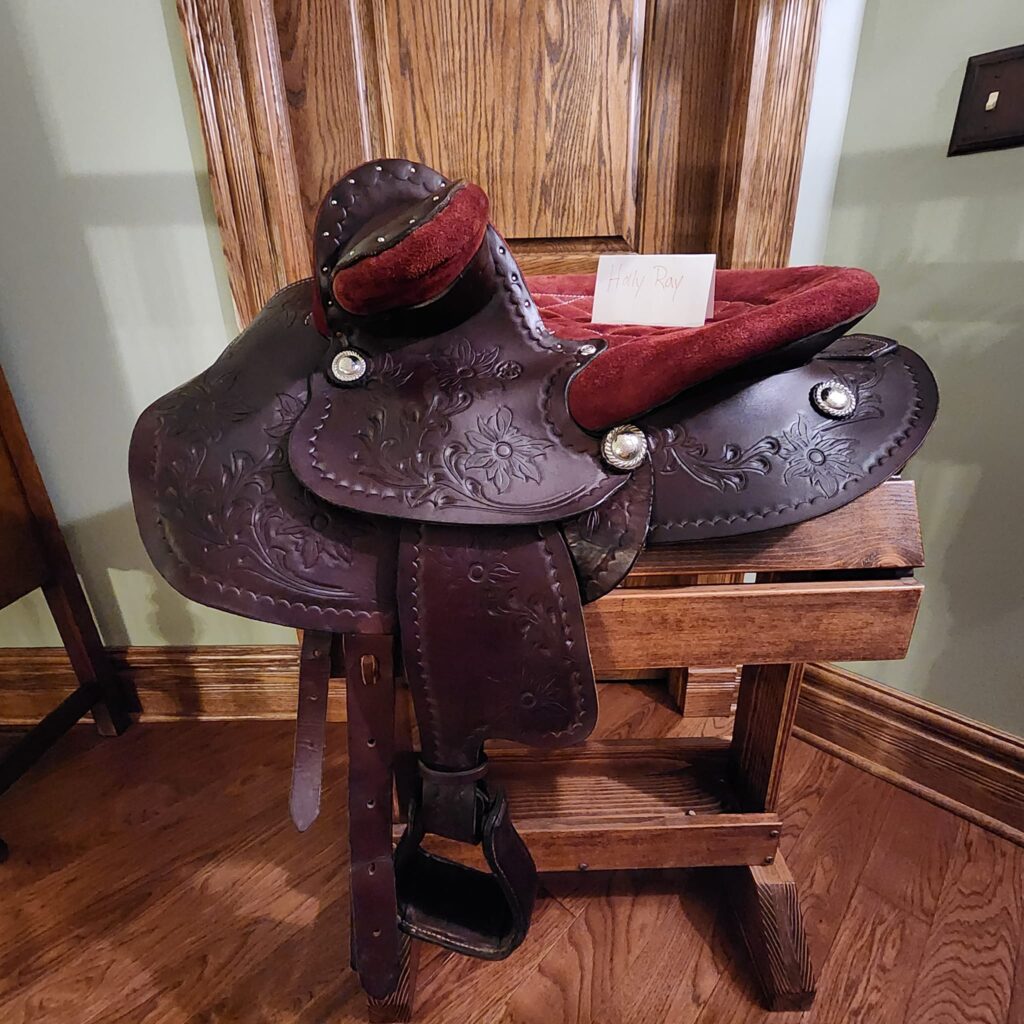
Modern Western Sidesaddle built on a Steele Tree
New Build
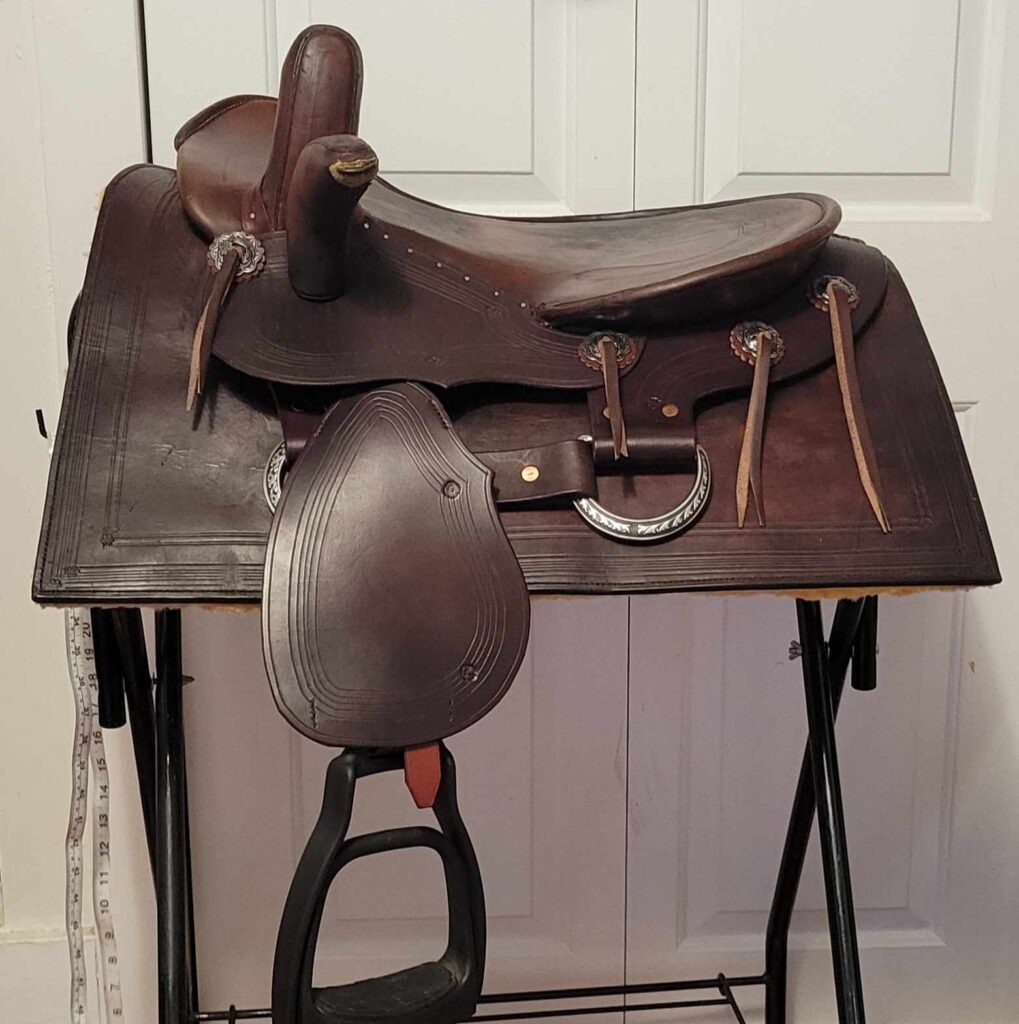
Vintage Western Sidesaddle
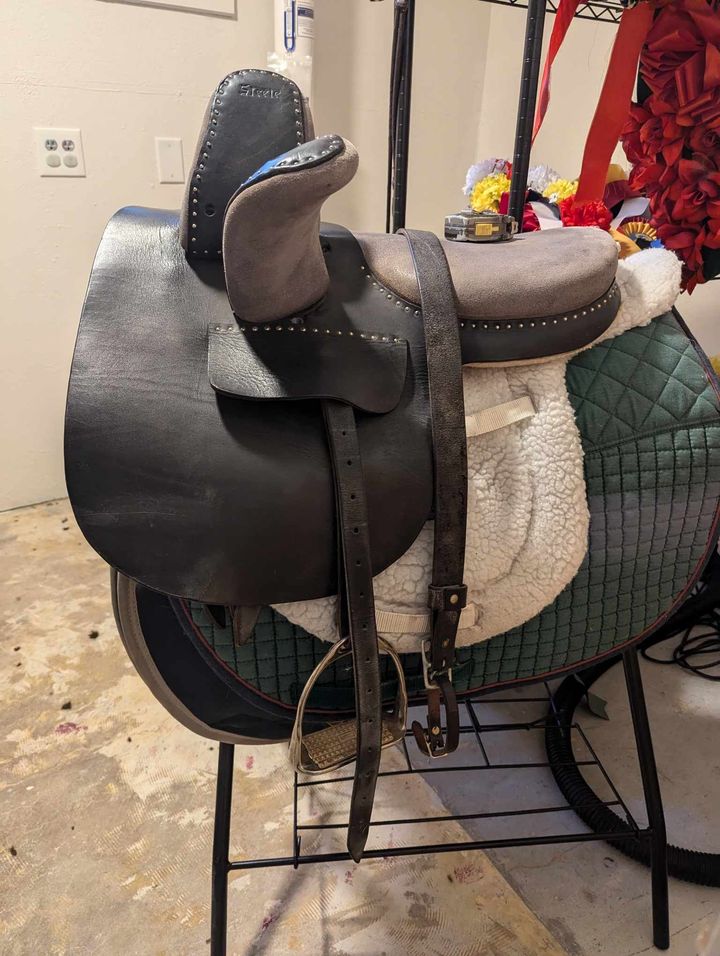
Steele English Equitation Sidesaddle
New Build

Find the Right Sidesaddle for You!
The Tack Room at the
American Sidesaddle Association
Want to Learn More about Saddle Fit?
Sign up to be a Member of the American Sidesaddle Association to gain access to helpful documents and presentations.
Check the Clinic Calendar to see when a Saddle Fitting Clinic will be held near you!
